A Piece of Chalk
Nobel Prize-winning physicist Steven Weinberg is one of the deepest and most original thinkers in modern physics. His research has mostly been in the theory of elementary particles and the related quantum theory of fields, together with occasional forays into cosmology. One thing I like about Weinberg is that he’s not just a brilliant physicist, but he’s is also a great expositor of popular science like the late Stephen Hawking. Considered by his peers and intellectual adversaries alike to be the preeminent theoretical physicist alive today, he continues to write a plethora of subjects that have also earned him a reputation as, in the words of “New York Times” reporter James Glanz, “a powerful writer whose prose can illuminate—and sting.” Throughout his career, Weinberg has penned a series of popular-science bestsellers, including “The First Three Minutes,” which is one of my personal favorite classic accounts of the “Big Bang,” the modern theory of the origin of the universe and most recently “To Explain the World: The Discovery of Modern Science”. He has also written articles on all sorts of things, from philosophy and religion to space and exploration and missile defense. He’s not quite a household name but he is regarded by many in his field as one of the most brilliant physicists today because of his seminal contributions in cosmology and particle physics.
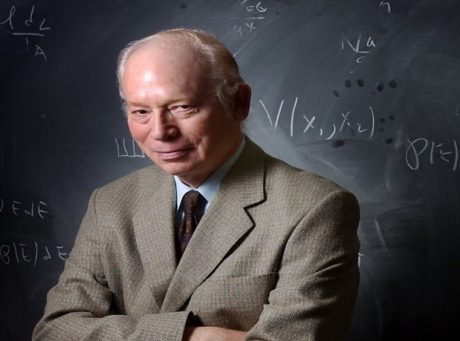
In the early ‘90s, he wrote an essay entitled “On a piece of chalk” (the title was taken from a famous lecture of the same name given by Thomas Huxley in the 1860s) in his seminal book “Dreams of a Final Theory”. In his essay, Weinberg explains that, whenever we ask “why?” questions in science, we seek an answer in the simplest terms. We can keep on asking “why?” questions, and we might end up with what might be called an arrow of explanation. One of the examples he cited was a piece of chalk. He asks: Why is chalk white? He explains that we can give an answer in terms of the light absorption properties of chalk. Why does chalk have its absorption properties? He further explains that the answer has to do with the molecular states from which chalk is made. He also explains that if we can keep on asking “why?” questions in this manner, the arrow of explanation points to the ideas of particle physics.
By the same token, Weinberg points out that if we keep asking the question “why?” in other fields of sciences such as biology, we will eventually lead to the idea of molecular genetics and the DNA molecule…
[Huxley] explained in his talk that the chalk is composed of the skeletons of tiny animals who absorbed calcium salts and carbon dioxide from ancient seas and used these chemicals as raw materials to build little shells of calcium carbonate around their soft bodies. The question is, why plants and animals developed organs like calcium carbonate shells that help them survive. The key was provided by the work of Darwin and Wallace that Huxley did so much to popularize and defend. Living things display inheritable variations—some helpful and some not—but it is the organisms that happen to carry helpful variations that tend to survive and pass these characteristics on to their offspring. But why are there variations, and why are they inheritable? This was finally explained in the late 1950s in the terms of the structure of a very large molecule, DNA, that serves as a template for assembling proteins out of amino acids. The DNA molecule forms a double helix that stores genetic information in a code based on the sequence of chemical units along the two strands of the helix. Genetic information is propagated when the double helix splits and each of its two strands assembles a copy of itself; inheritable variations occur when some accident disturbs the chemical units making up the strands of the helix.
Weinberg grew up in an era when groundbreaking breakthroughs had been made in molecular genetics iby James Watson, the then young professor of Harvard and Francis Crick, his co-discoverer of the DNA. These scientists were driven by intellectual curiosity in medicine and biological sciences. In the late 1930s, geneticists knew that genes were the basic unit of inheritance. They knew a great deal about how genes function, but they did not know the composition of a gene. Descriptions were vague and ranged from “a molecule of living stuff made up of many atoms held together” to the “ultimate unit of life.” Every molecular biology student worth his or her salt knows that that a gene is a specific stretch of nucleotides in DNA (or in some viruses, RNA) that contains information for making a particular RNA molecule that in most cases is used to make a particular protein. And each cell contains thousands of different genes and makes thousands of different RNAs and proteins. Gene expression is the process by which the information in DNA is converted to RNA and then to protein. The description of the flow of information involving the genetic material was termed the “central dogma” of molecular biology by Francis Crick in 1957. The central dogma was stated by Crick as “once information has passed into protein it cannot get out again” although it was a misnomer. Crick’s choice of the word dogma was not a call for blind faith in what was really a central hypothesis.
In the years following the discovery of the DNA, no discipline in biology has ever experienced and explosion in growth and popularity that molecular biology is now undergoing. There is intense public interest in the Human Genome Project and genetic engineering, due in part to fascination with how our own genes influence our lives. For decades, DNA was largely an academic subject and not the source of dinner table conversation in the average household or something that you curl up before going to sleep. In 1995 this changed when media coverage of the O.J. Simpson murder trial brought DNA fingerprinting to homes across the world. Two years later, the cloning of Dolly the sheep was headline news. Then, in 2001, scientists announced the rough draft of the human genome sequence. In commenting on this landmark achievement, former US President Clinton likened the “decoding of the book of life” to a medical version” of the moon landing. Increasingly, DNA has captivated Hollywood and the general public, excited scientists and science fiction writers alike, inspired artists, and challenged society with emerging ethical issues.
What is less known in the public is how the field of molecular biology clashed fiercely with another field in biology—the great schism between molecular biology and organismic biology (or evolutionary biology). The eventual convergence and reunification of these two fields produced some excellent and groundbreaking discoveries in science in order to understand life, its diversity, its mechanism, its history.
The Convergence of Molecular Genetics and Evolutionary Biology
Evolution is such a major tenet of biological sciences that in 1973 there’s a famous dictum articulated almost decades ago by the great Russian-born population geneticist Theodosius Dobzhansky, and still true, still important: “Nothing in biology makes sense except in the light of evolution.” In the early 70s, noted Harvard biologist Jonathan recalled the event when Dobzhansky delivered a speech to the summer meeting of the Society of Zoologists, of which he was outgoing president. Dobzhansky lamented in his speech the unfortunate trend within his beloved science: the incipient schism between molecular biology and organismic biology. Molecular biology at the time was relatively new, glamorous, and riding high because of James Watson, Francis Crick and Maurice Wilkins after they had just won the Nobel Prize for discovering the structure of DNA. Dobzhansky personified them as bright young scientists. Losos remembers the apparent schism of this community of people who worked on biological sciences… Many scientists who worked on molecular biology were awarded each year for work on this field. Doubts were expressed on each side about professional competence and ethical standards. Molecular biology was attracting a lot of bright young talents compared to evolutionary biology. Some of the molecular hotshots were inclined to dismiss evolutionary biology as less modern, less rigorous, and less scientific. Dobzhansky was hopeful—and prescient—that this division would lead to new insights, far-flung truths, and then back toward the unification of a larger, more robust biological sciences. The biggest news in biological sciences today is that, unlike the growing schisms between string theory and loop quantum gravity, the trend now is toward convergences and cooperation.
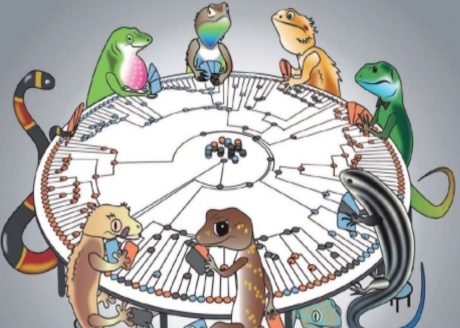
One of the great benefits in reuniting molecular biology with evolutionary biology will be in discovering which phenomena can be explained at the molecular level, and which are evolutionary alone. Losos cites some excellent cases on how studies of evolution have been augmented recently by investigations of the lactase mutation and inbreeding depression at the molecular level through genome scan technology and how these genetic mutations of famous people altered the course of history.
Genghis Khan’s LCT Gene and His Conquest of the Jin Empire
The debate on whether humans are still evolving or not often captures the popular imagination and regularly leads to conflicting claims even amongst media practitioners, scientists, and academics. Some people argue that evolution is no longer relevant to humans and that our technological advancement will allow us to modify our environment so effectively that many have argued that we have removed our species from nature. Even prominent scientists and science communicators have claimed that humans are no longer subject to natural selection and that humans have effectively ceased. They further argue that gene frequencies might still change over time through random factors such as genetic drift, but if our culture effectively removes us from environmental stress, then natural selection will no longer occur. We rather depend now on culture and technology for survival, rather than the random mechanism of variation and natural selection. On the other hand, other people argue that the vast migration of humans into new environments, coupled with an unprecedented increase in the global size of the human population, and dramatic changes in our diet, are predictive of an unparalleled intensification of evolution or natural selection in the near future. However, regardless of which forces eventually prevail in the coming millennia, the idea that human evolution will somehow cease is one that is increasingly difficult to sustain. In fact, humans have evolved rapidly and remarkably in the past 30, 000 years. One example of our relatively recent trait within human genome is provided by evidence for strong natural selection on the gene that controls lactase production. Among populations with a history of cattle herding or pastoralism and milk consumption, the ability to metabolize lactose is maintained into adulthood. Lactose tolerance is one of the best-studied examples of natural selection that has recently acted upon our species after the domestication of animals, and independently among different populations.
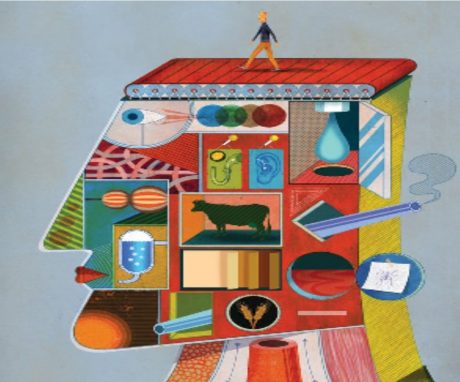
In “The 10,000-Year Explosion: How Civilizations Accelerated Human Evolution”, anthropologist Henry Harpending and co-author Gregory Cochran explored the explosion of human evolution in history, including the prominent role of milk and how lactose-persistent trait shaped human history. Lactose-tolerant populations, they claim, could aid the spread of their civilizations and cultures. They argued that lactase persistence made them better conquerors:
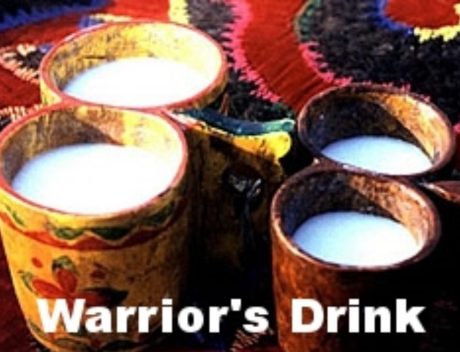
“Cattle herders of East Africa in the region of the Upper Nile and further south are lactase-tolerant milk drinkers due to a younger mutation of their own. They, too, have expanded: They have become warlike, and there are fascinating parallels between their religious and social structure and those of the ancestral Indo-Europeans. Another separate pair of mutations causing lactose tolerance happened in Arabian peninsula, driven in the case by the domestication of camels. This may have been an important cause of the explosive growth of Islam and the Arab conquests of the seventh century AD and later.”
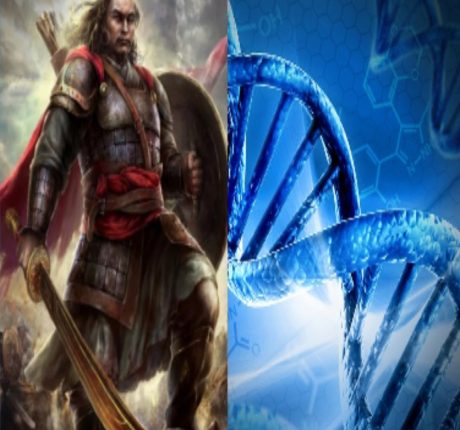
The most spectacular example is Genghis Khan, otherwise known as the “Scourge of God” (he probably deserved that nickname than Attila the Hun). In the early 13th century, the Jin Dynasty of China had the strongest, fiercest, and most brutal army in the world. In neighboring Mongolia, the forces of Genghis Khan were miniscule in comparison. With an army ranking ten times the size, the Chinese should have easily annihilated an invading Mongolian force. Genghis Khan and his whole country had probably 100,000 soldiers. China at the time had at least one million soldiers. Despite their lack of numbers, the Mongol armies of Genghis Khan had a secret weapon hidden in the nuclei of their cells. Many people in Mongolia are lactase persistent, so they are able to drink lots of milk, which is incredibly nutrient dense. Not all adults are able to digest milk. Many Mongolians had a developed a genetic mutation which meant they were able to digest sugar from milk into adulthood. It is one of the strongest signatures of natural selection of any single trait in our genome. The milk-drinking mutation was common among Mongolians, but not among Chinese Jin. Where the Jin people were all using primarily carbohydrates. The problem with the carbohydrates is that the energy is depleted very quickly. But Genghis Khan’s warriors revived themselves with horse’s milk and cheese. This made them meaner, leaner and fitter fighter with a physique built on strong calcium-rich bones. And the Mongol soldiers didn’t just benefit individually, their ability to digest milk affected their whole military strategy. The Chinese had as many animals pulling food as carrying people, so the soldiers often had to walk into battle because the animals were being used to transport food in very large amounts. The Mongolians milked the mares they rode and drank them frequently. This gave the Mongols great strength in battles. They may have only had 100,000 soldiers but every soldier was a warrior. Not only did the Mongol army make use of every soldier, it could also travel fast. It gave them ability to strike anywhere in the Chinese empire. The Mongol diet proved very advantageous in their battle against the Jin. The Mongols had a great advantage and they were able to use this in a strategic way in their fight against the sedentary people who depended on agricultural products. Milk became the food of conquerors like the Mongolians. The milk-digesting mutation spread fast. Legend has it that Genghis Khan had many wives and sired hundreds of children. The genetic mutations of the Mongolians gave them the advantage against the Jin dynasty and this could have altered the history. There was another genetic mutation which led to the downfall of other dynasties. One happened centuries ago in Spain and the other one most likely happened recently in the Philippines.
Inbreeding depression and the downfall of the Habsburg Dynasty
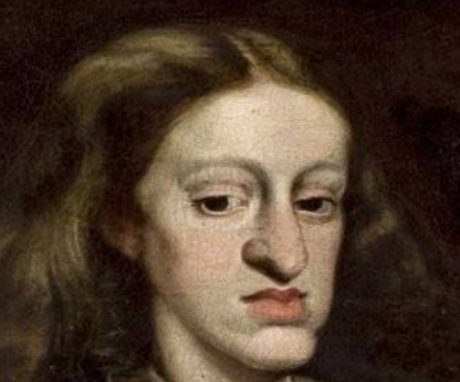
The European royal dynasties provide a rich source for the study of the effects of high inbreeding coefficients which could lead to inbreeding depression. One of the most important dynasties of the Modern Age was the Habsburgs. In 2009, Gonzalo Alvarez, a geneticist at the University of Santiago in Spain, and his colleagues measured the impact of high inbreeding coefficients on the Hapsburgs—and Charles II in particular—by building a detailed genetic makeup of the dynasty. They charted the detailed genealogy of Charles II’s ancestors and other relatives. The inbreeding coefficient was very important on this study.To calculate the probability that Charles II was homozygous at any of the loci, Alvarez and colleagues worked their way through his ancestry. His father, King Philip IV, was the uncle of his mother, Mariana of Austria. And Philip and Mariana themselves were also the product of a long history of inbreeding, going back to the early 1500’s. As a result, Charles II was more inbred than the children of a brother and a sister. Their findings offer a more accurate genetic framework for understanding the decline and the eventual downfall of the Habsburg dynasty… Noted evolutionary biologist Carl Zimmer hailed this breakthrough in “Evolution”:
Charles II belonged to the great Habsburg dynasty, which took over Spain in 1516 and dramatically expanded its sphere of power. When Charles II became king of Spain in 1665, the Spanish Empire was the greatest power on the planet. In the New World, its power reached from California down to the tip of Tierra del Fuego. In Europe, Spain possessed half of Italy. It held sway over much of the Caribbean as well as the Philippines. But all that would soon end.
Charles II was crowned at age four, and from the start it was clear that the boy was an unfortunate monarch. He had a host of deformities, including a jaw that was so large it left him unable to chew and a tongue so big he could hardly be understood when he spoke. He did not walk until he was eight, and he was such a poor learner that he was not formally educated. He vomited and suffered from diarrhea all his life. By age 30 he looked like an old man. All this suffering earned Charles II the name El Hechizado—“the Hexed”—because he was widely believed to be the victim of sorcery.
Spain suffered under Charles’s reign. Its economy shrank as it fought a host of small but draining wars. And worst of all, it became increasingly clear that Charles II would not produce an heir. The Hapsburgs had long feared such an outcome; to hold onto Spanish rule, they had taken to marrying within their family. Charles II not only failed to produce an heir with his two wives but also lacked any brothers or other Hapsburgs who could succeed him. And so, when Charles II died in 1700 at the young age of 39, he left the throne to Philip, a French duke who was the grandson of his half-sister and King Louie XIV of France.
Philip was not just the King of Spain now. He was also in line of succession to the French throne. There was a real chance that he might eventually become king of united France and Spain—a prospect that terrified the rest of Europe. Soon England, the Netherlands, the Holy Roman Empire, and other European powers declared war to stop Philip from creating a super-empire. They battled not just in Europe, but in their colonies as well. The English in the Carolinas waged war with the Spanish of Florida; in Canada, they battled the French and their Indian allies.
The War of the Spanish Succession claimed hundreds of thousands of lives by the time it ended in 1714. Spain and France were defeated and forced to sig away substantial parts of their empires. Philip forsook the French throne. Spain fell into decline, while England started its rise to become the most powerful empire on the planet.
Any major event in history has numerous causes—a complex interplay of geographical, economic, political, cultural, and historical circumstances. But one of the most important of them that is rarely discussed in history involved population genetics—specifically, how the genes of Spanish kings made their way through generations of the Hapsburg dynasty. Like many royal dynasties before them, the Hapsburgs tended to marry within their extended family. It was quite common for first cousins to marry, for example, and uncles even married nieces. Marrying relatives kept power within the dynasty, but it had an unfortunate side effect known as inbreeding.
Rare recessive alleles can be preserved in large populations, even if they are deleterious, because the more common dominant alleles overshadow them. In an inbreeding population, however, rare deleterious alleles can become unmasked in homozygotes. That’s because parents tend to be closely related and are thus much more likely to share rare alleles than are two people picked at random from a large population. When close relatives marry and have children, the chance that their children will be homozygous for theses alleles is greater than for children born to unrelated parents. The more closely the parents are related to each other, the greater the odds. The recessive alleles, previously hidden, combine in homozygotes and affect their phenotype and cause the downfall of the Habsburgs. These rare deleterious alleles more likely caused the decline of another dynasty in the Philippines…
Kris’s histrionics, Noynoy’s lack of empathy, and how their rare deleterious alleles more likely caused the decline of the Yellow Dynasty
There’s a strong likelihood that the failed presidency of Noynoy Aquino is a story of inbreeding depression and high inbreeding coefficient as well as history, because numerous evidence of his personality and character seemed to suggest that there was something rotten in the gene pool of the Aquino family. During his presidency, Noynoy Aquino had presented a peculiar set of psychiatric and behavioral signs which are typical of the behavior of some psychiatric patients I have encountered in the locked-up unit of behavioral health facilities here in California, such as empathy-related deficits, inappropriate affect in dealing with tragedies and natural and man-made catastrophes and having the constant habit of blaming other people for his own mistakes, among other things. One of his striking peculiarities is that he lacks empathy. He manipulates people yet feels no compunctions or regrets at all—in fact, he does not feel particularly deeply about his countrymen at all, whether you’re a victim of tragedies or calamities. His incompetence and failed leadership ushered in a period of chaos which led to Duterte’s victory in the presidential election. His constellation of ominous signs prompted me to investigate while taking a much-needed respite in graduate school. With a little searching, by way of one or two among those Google results, I have realized that it is possible that Noynoy had inherited a rare autosomal recessive inherited genopathy as a consequence of inbreeding or consanguineous marriages among his ancestors.

Here’s an excerpt from an online biography of the Aquino family:
Aquino, Jr.’s parents, Benigno S. Aquino, Sr. and Aurora Aquino Aquino, were related, albeit already third cousins. Benigno Sr.’s great-grandfather, Hilario Aquino, was the brother of Aurora’s great-grandfather. Cory and Ninoy first met when they were nine years old. Their fathers were both congressmen and Jose Cojuangco was the godfather of Ninoy’s younger sister, Lupita. Ninoy’s brother was married to Cory’s cousin.
Unlike Charles II in which you have geneticists and researchers citing strong evidence for inbreeding depression within the data set from the Spanish Habsburg, we Filipinos don’t have a complete or detailed empirical evidence on their inbreeding coefficients. But there’s strong likelihood that the inbreeding of his ancestors most likely caused their gene pool to have rare deleterious alleles. His late father Ninoy most likely “carried” these hidden recessive deleterious alleles and passed them to Noynoy, Kris, and Joshua. Like Noynoy, there’s also a possibility that Kris and her son unfortunately inherited those autosomal recessive genes. Kris’s most likely diagnosis is histrionic personality disorder. According to “The Diagnostic and Statistical Manual of Mental Disorder (DSM), the official psychiatric coding system used in the United States, “[p]atients with histrionic personality disorder show a pervasive pattern of excessive emotionality and attention seeking. Clue to making the diagnosis include theatrical and overblown speech and seductive manner. They are uncomfortable in settings when they are not the center of attention. Their emotions are shifting and shallow, and they often interact with others in a seductive manner. Their speech is impressionistic and lacks detail. They are dramatic and theatrical and exaggerate their emotional expressions.” Kris’s latest brouhaha and spat with Mocha Uson is eloquent proof of her histrionic personality disorder. It is also known in public that Joshua was born with autism spectrum disorder. Their rare deleterious alleles more likely caused Kris’s histrionic personality disorder and Joshua’s autism spectrum disorder. (Numerous studies suggest that histrionic personality disorder and autism spectrum disorder are caused by genetic and environmental factors.)
But let me delve a bit deeper into Noynoy Aquino’s neuropsychiatric and behavioral signs…
Neuroscientists are now discovering that psychopaths and people suffering from a wide array of neuropsychiatric disorders suffer from a brain abnormality that sets them adrift in an emotionless world. From neurobiological or neuropsychiatric perspectives, Noynoy’s brain processes are different from other people. It’s as if he has learning disability or brain abnormality that impairs his emotional development. His lack of empathy probably stems from his underdeveloped or damaged brain. Studies through fMRI images have suggested that people who show little empathy like Noynoy have underdeveloped paralimbic system, a horseshoe-shaped band of tissues that are involved in emotional processing. Supporting this imaging studies show a pronounced thinning of the paralimbic tissues of the paralimbic tissue—indicating that this part of the brain is underdeveloped, like a weak muscle.
This is where it gets more interesting. Studies have shown at the Harvard Medical School that some genes are responsible for regulating brain size. Scientists have identified a gene known as ASPM that can cause thinning of some areas of the brain. This is prevalent among nations where consanguineous marriages are common. There’s a strong likelihood that inbreeding depression caused by frequent and decades of consanguineous marriages of the Aquino family has ravaged their gene pool and eventual rare deleterious alleles more likely caused the downfall of the Aquino dynasty. Many of the symptoms could have been produced by genetic anomalies. Inbreeding can also give rise to homozygotes with recessive alleles that cause impotence or infertility—probably explaining why Noynoy remains bachelor. In other words, like the Habsburgs, the decline of the Aquino dynasty was due in part to inbreeding depression and genetic mutations.
[Certain topics of this article in evolutionary biology (i.e., natural selection of lactose tolerance), organismic biology, and molecular genetics were excerpted from one of my graduate school term papers… References of this article include Carl Zimmer’s “Evolution”, Jonathan Losos’s “Essays from Laboratory and the Field”, Lizabeth Allison’s “Fundamental Molecular Biology”, Harpending’s “The 10, 000-Year Explosion: How Civilizations Accelerated Human Evolution”, and Steven Weinberg’s “Dreams of a Final Theory”.]


No comments:
Post a Comment